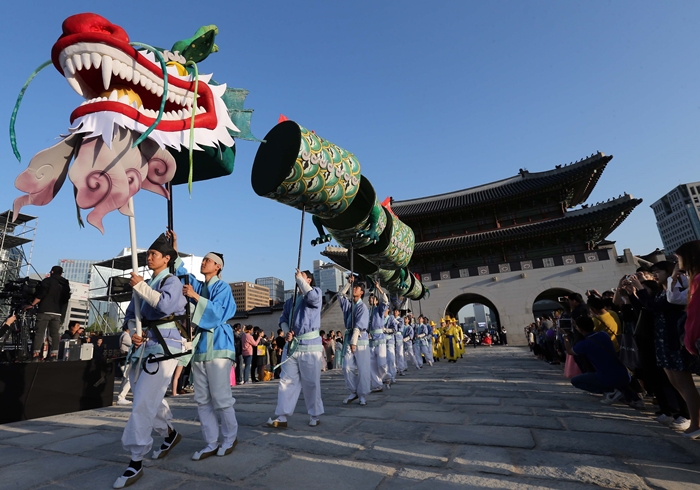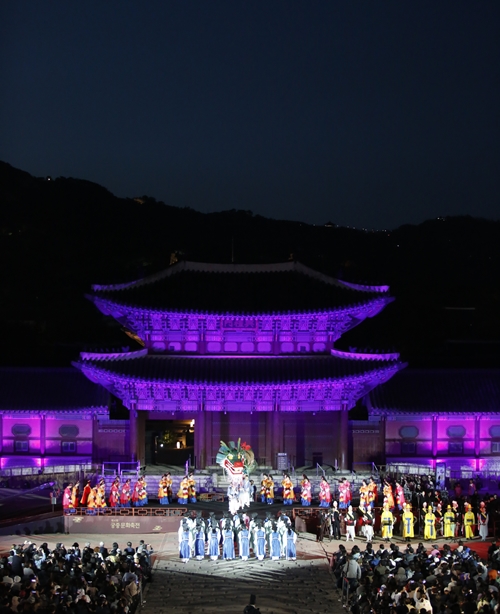
By Kang Gahui and Hahm Hee-eun
Photos = Cultural Heritage Administration
The fourth Royal Culture Festival will be held across five of Seoul's historical ancient sites: Gyeongbokgung, Changdeokgung, Changgyeonggung and Deoksugung palaces, and then the Jongmyo Shrine.
This year’s festival, which celebrates the 600th anniversary of the enthronement of King Sejong the Great (세종대왕, 世宗大王) (r. 1418-1450), shows Sejong’s affection for the people and his achievements in making a peaceful era of harmony and communication.
Starting with the opening ceremony on the theme of “The 600th anniversary of King Sejong’s enthronement, looking ahead to the future” at the Heungnyemun Square in front of Gyeongbokgung Palace on April 28, various exhibitions, performances, ceremonies and experience centers will be arranged around downtown Seoul until May 6.
The highlight of this year’s event is the Sandaehi (산대희, 山臺喜), the most magnificent arts festival of Joseon times, that includes a royal court ceremony and a traditional madangnori outdoor performance.
A sandae is a mountain-shaped stage structure that's used as a background for many performances, including the cheoyongmu theatrical animal plays, and the daedongnori mask dance. Audiences can also join in on the stage. After the performances, the story of Sejong’s early life, his enthronement and the concerns he had as king for the people will be presented.
Moreover, there are various events that will give a glimpse into Sejong’s life and the royal rituals that surrounded the Joseon throne in the early 1400s.
In particular, a musical performance called the "King's Gift" will be staged at the Geunjeongjeon Hall at Gyeongbokgung Palace on May 5. A treasure hunt, which helps participants trace the footsteps of Sejong himself, will be held daily until May 4. Daily printings of the "Hunminjeongeum" (1446), or "The Correct Sounds for the Instruction of the People" that introduced the Hangeul alphabet, will be held until May 5, bringing light to the meaning of the creation of Hangeul.
For further information please check out the English website below.
www.royalculturefestival.org

During the Royal Cultural Festival, nightly concerts are held every day at 8 p.m. at the Gyeonghoeru Pavilion at Gyeongbokgung Palace until May 5.
kgh89@korea.kr